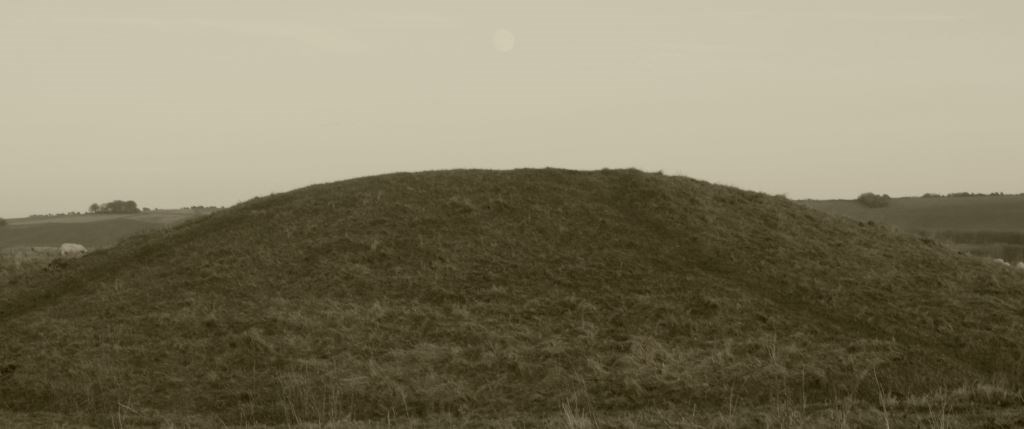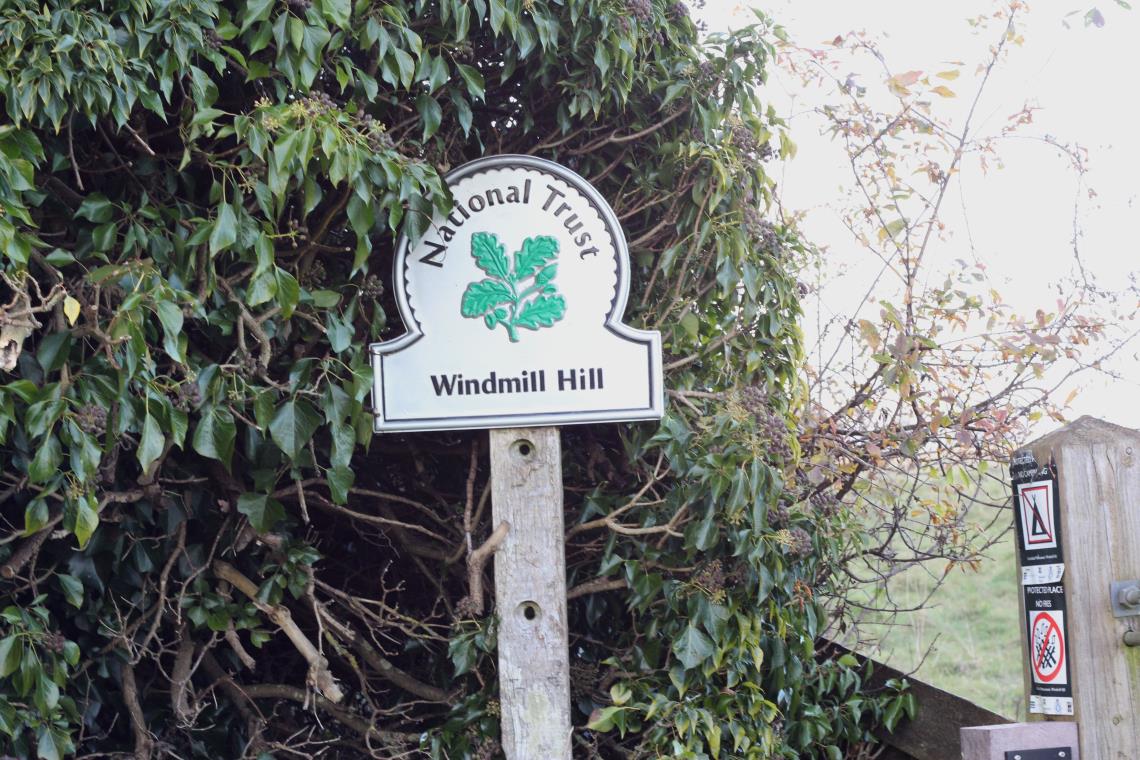Avebury, Marconi & the wireless station that never was

In 1923 the Marconi Company intended to purchase several thousand acres of land in the vicinity of Avebury in Wiltshire for the construction of a wireless station. It is well known that Alexander Keiller purchased Windmill Hill in order to prevent the erection of masts and aerials on the hill and protect archaeological features. However, what were Marconi's intentions? Why did they need so much land and why this part of Wiltshire?
A letter to The Times in August 1923 stated "The Marconi Company expect to acquire some ten thousand acres in the neighbourhood both to the north and south of Avebury, an area enclosing many remains of great archaeological interest and value, including Windmill Hill and the Long Barrows at East and West Kennett. The nearest mast to Avebury that it is proposed to erect will be over half a mile distant from the village and Circle. There will be no other construction of any kind nearer than that and the erection of dwelling-houses anywhere in the neighbourhood is not contemplated."
The potential Marconi acquisition at Avebury was controversial, both locally and nationally, but a key factor was the lack of opposition to the plans by the Wiltshire Archaeological and Natural History Society after receiving assurances that monuments would be protected. Several other factors made the site attractive; open countryside and rolling Downs suitable for large aerial arrays unimpeded by woodlands, hedgerows, etc., electromagnetically quiet location due to lack of industry and sparse population, accessibility to a major link in the telegraph network that followed the nearby A4 and prior knowledge of the area associated with construction of the first Imperial Wireless Chain (IWC) receiving station just 4 miles away near Devizes. The Devizes Wireless Station never actually operated as part of the IWC due to the outbreak of WWI in 1914 when the contract with Marconi was ended and the site taken over for military use. However, in 1920 the General Post Office started to operate a maritime communication service which became very busy by 1923 exposing some technical shortcomings in the site which eventually resulted in its closure in 1929. The close proximity of the Devizes station raises questions about interference between the two sites especially given that low levels of electromagnetic 'noise' from other sources made Avebury an attractive proposition. Perhaps Marconi knew that the 'writing was on the wall' for the Devizes station.
The 1920s saw rapid changes in wireless technology and a much wider acceptance of the potential of wireless for reliable long distance communication. However, the British government had been slow to take advantage of the technological progress and had often lacked clarity with regard to support for private enterprise within a sector that had significant implications for national security.
On March 6th 1923, Prime Minister Bonar Law announced that it was no longer necessary to exclude private enterprise from participation in wireless telegraphy within the empire. Marconi involvement with the pre-WWI IWC sites ended with the termination of their contract at the beginning of the war, with the company then suing the government for compensation in 1919. Post war pressure to revive the scheme resulted in the completion of the first link in the chain in 1922 using a powerful transmitter based at Leafield in Oxfordshire to communicate with Abu Zabul in Egypt; however, what Marconi had started at Leafield in 1913 effectively was completed by the GPO in 1922 (Leafield had been used for military purposes during WWI). The Prime Minister's 1923 announcement was, therefore, a reaction to the comparatively slow pace of wireless development in Britain under total state control and that the use of private companies by other major powers (USA, France and Germany) had left the country behind.
There was also pressure from the Dominions to complete wireless links with Britain as well as differences regarding the actual technology involved. Experimentation using short waves after WWI showed that reliable communication could be established using much less power, signals effectively being reflected from the ionosphere, compared to the established long wave stations which relied on ground waves and extremely high power transmitters to cover long distances. Marconi's experiments with short wave and directional aerials led to development of the Marconi Beam Wireless system where signals could be directed into a narrow beam towards the distant station where communication was required. The advantages were that the energy of the transmitter could be used far more efficiently compared to the existing long wave stations where signals were broadcast widely, the beam aerials also enhanced the received signal from a distant station by limiting electromagnetic noise and providing gain. Initially, the Marconi Beam Wireless system was unproven but the company were confident that it could meet the aims of the British Government within the Imperial Wireless Service, some of the Dominions were more in favour of the beam system as short waves could provide direct communication rather than relying on chains of long wave receivers and transmitters linking the empire over vast distances, which had been the original concept stalled by the outbreak of WWI.
The British government eventually committed to the construction of a long wave system, that would allow communication between the near continent and North America, and Marconi beam stations communicating with distant parts of the empire. The long wave station was initially to be built by the GPO with a similar station built elsewhere by a private company, although this never happened. In 1923 Wireless World published an article that mentions a site on the Marlborough Downs being chosen for the location of the transmitter (presumably Avebury) with a reserve site in the Midlands, probably where the GPO built Rugby Radio. Other press reports of the time referred to Marconi's interest in Avebury and how they would build 800 feet high masts for aerial systems; we know the masts at Rugby were of that height so it seems likely that Marconi were hoping to either build the sister station there, as initially requested by government, or that they would construct the main site for the GPO. The Wireless World article infers the building of only one station so the latter may be more likely.
Press reports of the potential purchase of thousands of acres of downland by Marconi may also infer that they were intending to operate several separate Beam Wireless stations from the one location.
The Wireless World and Radio Review (April 21st 1923) states "..... it is reported that a provisional site has been chosen for the first station on the Marlborough Downs, Wiltshire. An alternative site in the Midlands has also been under consideration. Mr. Godfrey Isaacs, managing director of the Marconi Company, states that they are only awaiting the issue of the necessary licence by the Government to begin with the erection of the station, which will really be a group of six stations. The English station will ultimately be linked up with ten other stations, to be situated in South Africa, Australia, Montreal, Vancouver, India, Buenos Aires, Rio, Pernambuco, Peking, and Tokyo. Each of these stations will include one transmitting section and three or four receiving sections."
Countries linked by the system would have required the construction of several beam arrays, each aerial system being aligned perpendicular to the great circle path to that location. In effect, were Marconi looking to construct a giant complex of wireless stations within the vicinity of Avebury? There would undoubtedly be a number of technical challenges so that it is unlikely that there would have been a mixture of transmitting and receiving stations; given the electromagnetically quiet location and the close proximity to the underground trunk telegraph cables linking London to the West (adjacent to the A4) it would seem more likely that the site would have contained receiving stations with transmission from elsewhere. However, with the emerging interest in wireless as a means of entertainment, news and information, high power transmitters were unwelcome in well populated areas so there is a good argument for transmission from Avebury.
The only thing we do know is that Marconi lost interest in Avebury. Alexander Keiller's purchase of Windmill Hill would have ensured protection of archaeology there although the site was only a small percentage of the large area purported to be of interest to the company, and Keiller continued to purchase land long after the Marconi threat had vanished. The government had opted for state construction and control of the long wave transmitter at Rugby but Marconi built Beam Wireless Stations for the GPO at several sites around the country. It is unclear whether political decisions, archaeology, technical factors, or perhaps the close proximity of the highly successful maritime wireless communication site at Devizes and therefore the potential for interference, were responsible for the loss of interest in Avebury.

As a footnote, the village did become the site of a wireless transmitter and receiver that played a critical role in the defence of Britain during WWII - that is the Ground Control Intercept Radar site (12G) located immediately west of the village. It operated along with a small number of similar sites in the defence of southern England from attack by low flying enemy aircraft, but that's another story!